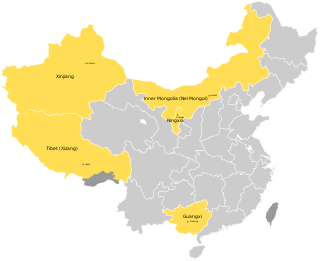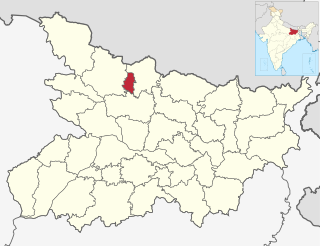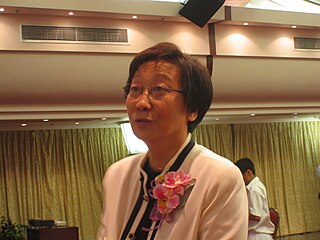
The demographics of North Korea are determined through national censuses and international estimates. The Central Bureau of Statistics of North Korea conducted the most recent census in 2008, where the population reached 24 million inhabitants. The population density is 199.54 inhabitants per square kilometre, and the 2014 estimated life expectancy is 69.81 years. In 1980, the population rose at a near consistent, but low, rate. Since 2000, North Korea's birth rate has exceeded its death rate; the natural growth is positive. In terms of age structure, the population is dominated by the 15–64-year-old segment (68.09%). The median age of the population is 32.9 years, and the gender ratio is 0.95 males to 1.00 female. Since the early 1990s, the birth rate has been fairly stable, with an average of 2 children per woman, down from an average of 3 in the early 1980s.

The demography of Australia covers basic statistics, most populous cities, ethnicity and religion. The population of Australia is estimated to be 25,965,800 as of 17 March 2022. Australia is the 55th most populous country in the world and the most populous Oceanian country. Its population is concentrated mainly in urban areas and is expected to exceed 28 million by 2030.

The United States had an official resident population of 331,449,281 on April 1, 2020, according to the U.S. Census Bureau. This figure includes the 50 states and the District of Columbia but excludes the population of five unincorporated U.S. territories as well as several minor island possessions. The United States is the third most populous country in the world. The Census Bureau showed a population increase of 0.8% for the twelve-month period ending in July 2012. Though high by industrialized country standards, this is below the world average annual rate of 1.1%. The total fertility rate in the United States estimated for 2020 is 1.638 children per woman, which is below the replacement fertility rate of approximately 2.1.

The autonomous regions are the highest-level administrative divisions of China. Like Chinese provinces, an autonomous region has its own local government, but under Chinese law an autonomous region has more legislative rights, such as the right to "formulate self-government regulations and other separate regulations." An autonomous region is the highest level of minority autonomous entity in China, which has a comparably higher population of a particular minority ethnic group.

Sheohar is an administrative district in the state of Bihar in India. The district headquarters are located at Sheohar, and the district is a part of Tirhut Division. This district was carved out of Sitamarhi district in 1994 due to the extreme efforts of Raghunath Jha, former Union Minister. Eminent Hindi Novelist, Dr. Bhagwati Sharan Mishra was the first District magistrate of Sheohar.

Jhabua is a district of Madhya Pradesh state in central India. The town of Jhabua is the administrative headquarters of the district.
Binnish is a city in northwestern Syria, administratively belonging to the Idlib Governorate, located just north of Idlib. Nearby localities include Kafriya and Maarrat Misrin to the northwest, al-Fu'ah to the north, Ta'um and Taftanaz to the northeast, Iffis to the southeast and Sarmin to the south. According to the Syria Central Bureau of Statistics (CBS), Binnish had a population of 52,000 in the 2011 census. Its inhabitants are predominantly Sunni Muslims.

In demographics, the term world population is often used to refer to the total number of humans currently living, and was estimated to have exceeded 7.9 billion as of November 2021. It took over two million years of human prehistory and history for the human population to reach one billion and only 200 years more to grow to 7 billion.

Women in Macau, as described by Candice Chio Ngan Ieng, president of the Macau Women's General Association (AGMM), in 2010 are currently defining themselves as capable and irreplaceable powers to Macau's modern-day civilization.

The 2010 Chinese census, officially the Sixth National Population Census of the People's Republic of China (中華人民共和國第六次全國人口普查), was conducted by the National Bureau of Statistics of the People's Republic of China with a zero hour of November 1, 2010.
Earth has a human population of 7.9 billion, with an overall population density of 50 people per km2, excluding Antarctica. Nearly 60% of the world's population lives in Asia, with more than 2.7 billion in the countries of China and India combined. The percentage share of India, China and rest of South Asia in world population have remained on similar levels for the last few thousands years of recorded history. The world's literacy rate has increased dramatically in the last 40 years, from 66.7% in 1979 to 86.3% today. Lower literacy levels are mostly attributable to poverty. Lower literacy rates are mostly found in South Asia and Sub-Saharan Africa. The world's largest ethnic group is Han Chinese, with Mandarin being the world's most spoken language in terms of native speakers.
The 1964 Chinese census, officially the Second National Population Census of the People's Republic of China, was conducted by the People's Republic of China with a zero hour of 1 July 1964. The results of the census were not publicized and its very existence was not officially acknowledged until the early 1980s.
The racial and ethnic demographics of the United States have changed dramatically throughout its history.
The 2000 Chinese census, officially the Fifth National Population Census of the People's Republic of China, was conducted by the government of the People's Republic of China with 1 November 2000 as its zero hour. The total population was calculated as 1,295,330,000. The census also covered population growth, number of households, sex, age, ethnicity, educational attainment, and urban and rural population.









